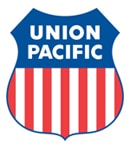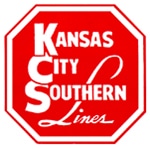CSX Corporation announced July 16 second quarter net earnings of $535 million or $0.52 per share. For the second quarter of 2012, CSX earned $512 or $0.49 per share. According to these figures, CSX is up a profit of $23 million over last year’s earnings for the same quarter.
CSX attributes these profits to overall revenue growth, service and efficiency results, and other items such as tax and real estate. Revenue for the second quarter 2013 was a total of almost $3.1 billion. CSX was at an operating income of $963 million and an operating ratio of 68.6% for the quarter.
Operating ratio is a railroad’s operating expenses expressed as a percentage of operating revenue, and is considered by economists to be the basic measure of carrier profitability. The lower the operating ratio, the more efficient the railroad.
CSX is up from last quarter, having reported a net income of $459 million or $0.45 per share. Revenue for the first quarter was at $2.96 billion, quite a bit less than this quarter’s reported $3.1 billion.

UP saw an increase of operating revenue to $5.5 billion, while last year’s operating revenue for the same quarter was only $5.2 billion. The freight revenue was also at a five percent increase and their operating ratio of 65.7 percent was the best ever recorded at 1.3 points higher than the second quarter last year; and 0.9 points better than the previous best-ever record which was set in the third quarter of 2012.
Second quarter earnings are also up from the first quarter of this year. UP reported increased revenue of $5.29 billion for the first quarter, a great deal less than this quarter’s reported $5.5 billion.

The railroad saw an operating income of $179 million, 12 percent higher than the same quarter of the previous year and an operating ratio of 69.0 percent, a 1.5-point improvement.
Revenue growth for the second quarter was led by a 26 percent increase in Energy, a 20 percent increase in Automotive and a 13 percent increase in Intermodal revenues over last year. Revenues from Chemicals & Petroleum and Industrial & Consumer grew by 11 percent and four percent respectively over last year’s second quarter.
KCS saw a decrease in revenues from Agriculture and Minerals, which decline by 18 percent, due to droughts and a decrease in grain volumes.

CN reported a net gain of C$13 million that resulted from a gain on a non-monetary transaction with another railway. Excluding this transaction, it’s reported that CN saw an increase of diluted earnings per share (EPS) of 11 percent to C$1.66 for the second quarter. The same quarter last year was at C$1.50.
Revenues saw an increase of five percent to C$2,666 million that was reportedly driven by a five percent increase in revenue ton-miles and a two percent increase in carloadings.
CN reported that operating income increased six percent to C$1,042 million with an operating ratio (defined as operating expenses as a percentage of revenue) improvement of 0.4 of a point to 60.9 percent.
“We executed strongly during the second quarter, with service and operating metrics on a steady improvement trend. This performance underscores our agenda of Operational and Service Excellence, which is key to achieve solid revenue growth at low incremental cost. … Despite slower volume growth than anticipated, the CN team will maintain a keen focus on growing revenues faster than the overall economy as well as on tightly managing costs to meet our full-year financial outlook,” said President and Chief Executive Officer Claude Mongeau.
Norfolk Southern (NS) announced Tuesday, July 23 an 11 percent decrease in income for the second quarter 2013. Income was at $465 million for the second quarter of 2013 whereas they were at $524 million for the same quarter of 2012.
Diluted earnings per share were at $1.46, nine percent lower than they were in 2012 at $1.60 per diluted share.
The operating revenues for the railroad came in at $2.8 billion, three percent lower than in 2012. However, the operating ratio came in at 70.2 percent, which is four percent higher than the ratio reported for the second quarter of 2012.
Fuel surcharges came in at $306 million, $59 million less than last year’s reported amounts. General merchandise revenues rose to two percent to $1.6 billion. Coal revenues fell 17 percent to $626 million due to lower average revenue per unit and a four percent decline in volumes. NS reported that Intermodal revenues increased four percent to $588 million and volumes increased five percent due to continued domestic and international growth.
“In the second quarter, Norfolk Southern delivered solid results, supported by growth in our chemicals, intermodal, and automotive businesses, despite continuing weakness in the coal markets,” CEO Wick Moorman state. “We continue to focus on service efficiency and velocity, which is enabling us to control operating expenses and deliver superior performance to our customers.”

Operating income came in at C$420 million, an increase over the second quarter of last year by 76 percent.
Total revenues for CP were C$1.5 billion, an increase of ten percent; also a quarterly record. Operating expenses were low at C$1.1 billion, a decrease of four percent. CP reported a net income of C$252 million or C$1.43 per diluted share.
The second quarter of 2012 had a net income of only C$103 million or C$0.60 per share. The second quarter of 2013 had a 138 percent improvement in year-over-year earnings per share.

 MECCA, Calif. — Last week, a 10-month-old poodle-terrier mix was found tied to the railroad tracks.
MECCA, Calif. — Last week, a 10-month-old poodle-terrier mix was found tied to the railroad tracks. MASON CITY, Iowa – Trainman Georgiy Soloviyov, 35, became the fifth UTU member killed on duty in 2012 following a Union Pacific yard accident here early July 31. Mason City is some 130 miles north of Des Moines, near the Minnesota border.
MASON CITY, Iowa – Trainman Georgiy Soloviyov, 35, became the fifth UTU member killed on duty in 2012 following a Union Pacific yard accident here early July 31. Mason City is some 130 miles north of Des Moines, near the Minnesota border.